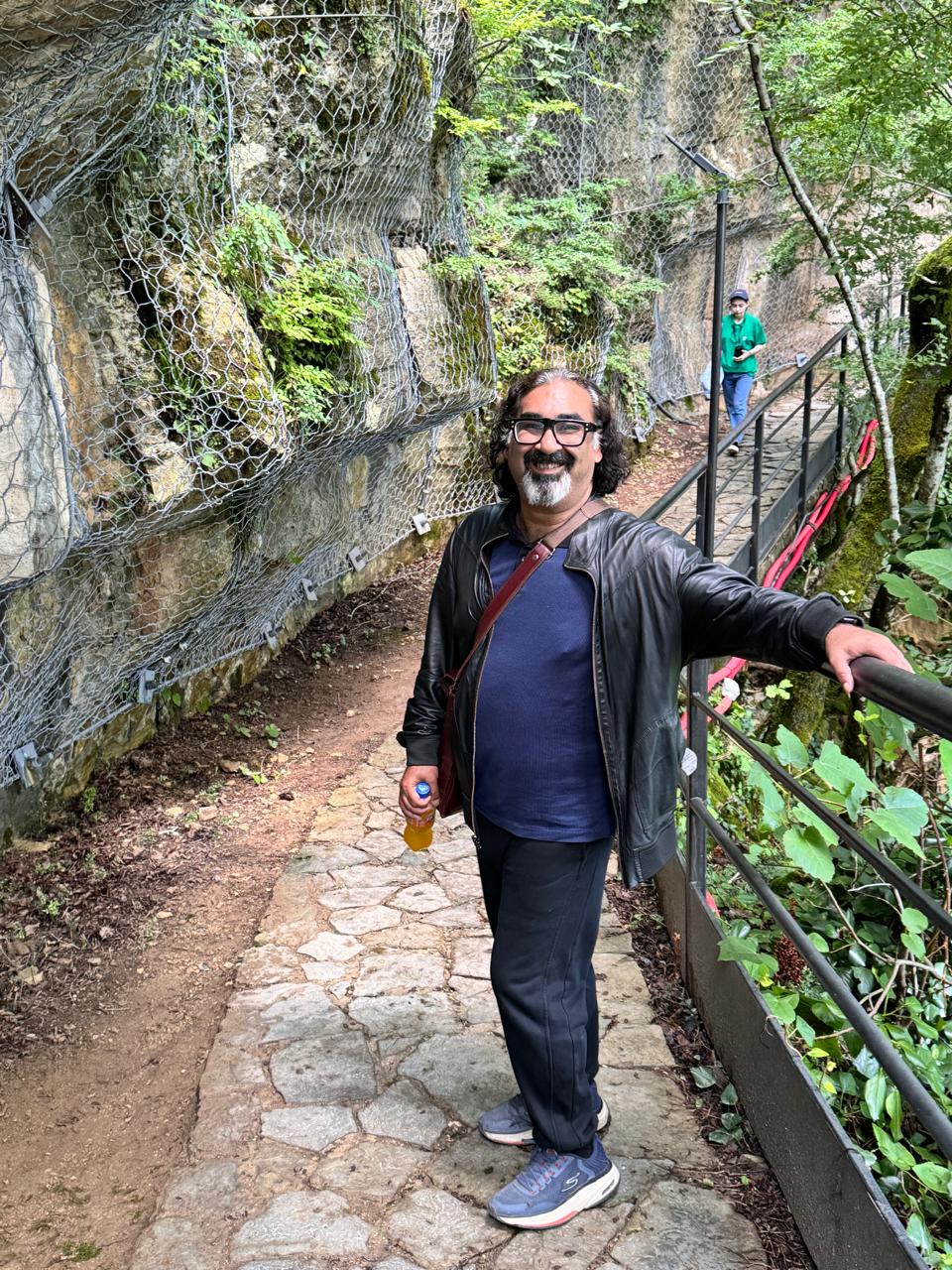Sataplia Caves are a natural wonder of Georgia. It is a unique sightseeing place and even has huge dinosaur footprints that one can see.
One of the caves is called Tauiskhvati Cave, which is inside the huge nature park. There is also the Navenakhevi Cave Natural Monument. This is a 250-meter high, two-story cave comprised of four caverns with diverse and beautifully formed stalagmites and stalactites. These have been formed over millions of years as water drips from the rocks, causing deposits to grow and jut out like spears from the rock formations.
I walked through these cave formations. Sataplia was the first cave that got equipped with modern services and utilities, making it accessible for tourists. The caves represent a natural bed on the river Oghaskura, with headwaters located 200 meters away from the cave. During the past thirty million years, the small river has passed through the caves, significantly widening its corridors. The cave has several branches, and its total length is 900 meters. The length of the path within the cave is about 309 meters. An incredible world opens up in front of you when you first enter the cave. Pinkish-purple colors are proof that iron is contained within. The growth process of stalactites is terminated in one section, which is why this hall is called the “Transparent Hall.” After the hall, the corridor leads to the north. Here, the growth process of stalactites is terminated, and that is why this hall is called the “Sinister Stone Garden.” One of the stone structures looks like the shape of a human heart, with a height of over 3 meters and a diameter of over 12 meters. From the stalagmites on the ceiling, calcium-enriched water permanently drips down. The constant temperature of the caves is 14 degrees throughout the year.
Meandering through the Sataplia Caves
The caves are illuminated with green and red neon lights that give them a distinct look and feel. The caves contain many organisms adapted to the darkness, such as feral water mollusks, blind crayfish, spiders, and worms. The most interesting inhabitants are bats, which use the caves for hibernation.





































